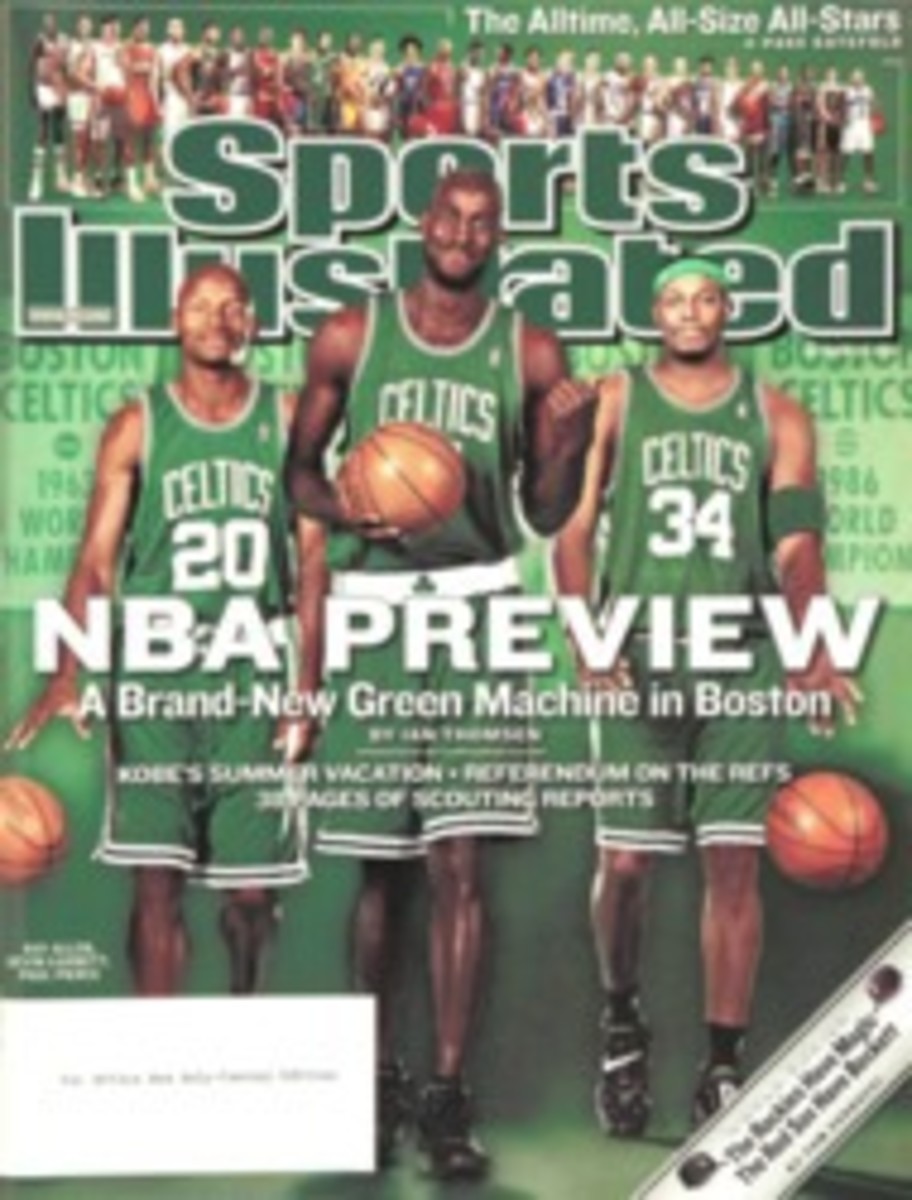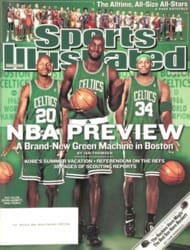
You're a Good Sport, Charlie Brown
OVER FIVE DECADES of solitary and deeply personal work, Charles Schulz drew 17,897 Peanuts comic strips, producing a body of work that constitutes not only the richest achievement in comic strip history but also—and this certainly falls into world's tallest midget territory—the most resonant sports strip of all time. Thousands of Peanuts panels are filtered through Schulz's love of sports, among them the many hundreds that make up the classic collection Sandlot Peanuts, and the dozens reproduced in David Michaelis's full and insightful new biography Schulz and Peanuts.
Peanuts's simple genius lies in Schulz's ability to get to the heart of large matters (unrequited love; loneliness) and essential life questions (is there a Great Pumpkin?) through the lens of emotionally precocious children. The reason the sports stuff works so well is that sports, by and large, compels a part of us that has never grown up. In a strip drawn after the Giants' loss to the Yankees in the 1962 World Series, Charlie Brown and Linus sit silently and glumly on a curb for three frames. In the fourth Charlie Brown blurts, "Why couldn't McCovey have hit the ball three feet higher?" It's a movable lament: Why couldn't Buckner have fielded that grounder? Why couldn't Bartman have backed off? Why couldn't those gnats have left Joba alone?
Michaelis's wonderful book shows how the events and relationships in Peanuts are, almost unfailingly, events and relationships distilled from Schulz's life. (Not long after a phone bill reveals to Schulz's wife, Joyce, that he is having an extramarital affair, Charlie Brown prevents Snoopy from canoodling with a girl beagle. "And no more long-distance phone calls!" Charlie Brown warns.) He drew strips involving hockey (Schulz, active as an amateur player and organizer, was inducted into hockey's hall of fame in 1993), golf (his father buried soup cans in the lawn so Charles could practice putting), football (Lucy, placeholding, yanked the pigskin away from Charlie Brown once a year, every year, from 1952 to '99) and, of course, baseball.
As a child, Schulz, who died in 2000 at 77, ran a sandlot team, which preoccupied him. In a series of strips reproduced in Michaelis's book, Charlie Brown wakes one morning to see the sun rising as a giant baseball. Next it's the moon, then an ice cream cone that's a ball. Finally Charlie Brown develops a rash in the pattern of a hardball's stitching on the back of his smooth, spherical head, leading him to a pediatrician. "Doctor, am I cracking up?" he asks. "Is it the bottom of the ninth?"
For Charlie Brown baseball is the end all; he's out pitching in deep snow and pelting rain. But for the others—Lucy in rightfield with her umbrella, Snoopy at short with his supper dish—baseball is folly. This may be Schulz's most valuable lesson to the impressionable child: that in the end sports don't matter all that much. One strip after Linus tells Charlie Brown that he has been "the victim of a short and sad love affair," we see Linus under a fly ball. "I got it!" he shouts. "At least I think I've got it! Who knows? Actually who cares? When you've lost at love, you've lost at everything.... Nothing matters." The ball drops.
Only a small portion of Schulz gets into his sports side, but it's enough to say a lot about the Peanuts gang, and about ourselves as fans. It's also enough to remind you that if you don't have Schulz's sports strips in your library—and a copy of 1977's Sandlot is step one—you're cheating yourself.
Click This
NEW POINT GUARD Mike Conley may not get the Grizzlies to the playoffs, but the rookie will have Memphis fans whistling Sweet Georgia Brown at some point this season. Over the summer Conley, 20, honed his Globetrotter-like ball handling skills with hoops instructor Ed Schilling. A video of a typical dribbling drill can be seen at SI.com/clickthis, under the blog entry Keeping the Ball on a String. It's an impressive display: The ambidextrous Conley is equally adept at yo-yoing the ball with both hands. If he shoots half as well as he dribbles, Memphis has a keeper.
FOUR ILLUSTRATIONS
PEANUTS: © UNITED FEATURE SYNDICATE, INC. (STRIP)
PHOTO
ILLUSTRATION
PEANUTS: © UNITED FEATURE SYNDICATE, INC. (CHARLIE BROWN)
PHOTO
JOE MURPHY/NBAE/GETTY IMAGES (CONLEY)

